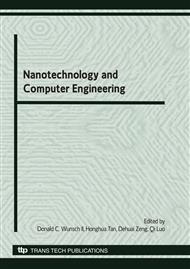p.275
p.281
p.287
p.294
p.300
p.304
p.309
p.314
p.320
Research on Expanded Critical Path Algorithm and its Application
Abstract:
In the practical applications, there is not only one critical path between nodes in the net. Therefore, it needs to find all critical paths among path selections under other restrictions, and then compare and select optimal or better path in these critical paths. Based on introduction of definition and nature theorem of main critical path, the paper brought out an expanded critical path algorithm in the view of application, which solved the storage problem of duality relation with duality table of net, so as to provide a good basis for determine number of critical path with main critical path algorithm.
Info:
Periodical:
Pages:
300-303
Citation:
Online since:
June 2010
Authors:
Keywords:
Price:
Сopyright:
© 2010 Trans Tech Publications Ltd. All Rights Reserved
Share:
Citation:


